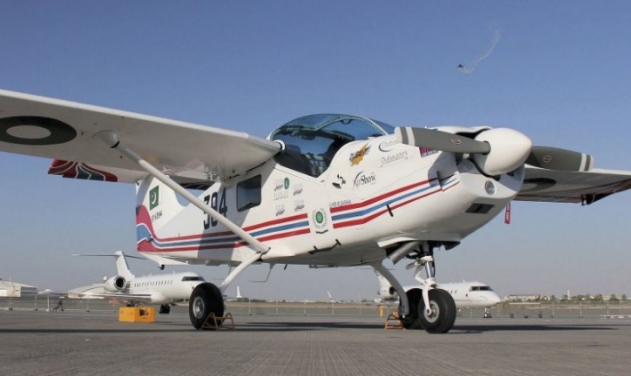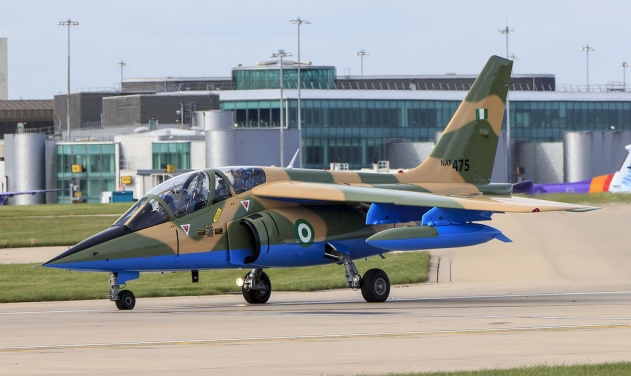Nigerian Air Force Inducts First UAV

The Nigerian Air Force (NAF) inducted its first indigenous operational Unmanned Aerial Vehicle (UAV) nicknamed Tsaigumi, in a ceremony on 15 February.
The Tsaigumi UAV, which was produced by NAF Aerospace Engineers in collaboration with UAVision of Portugal, would be used for ISR operations in land and sea domains. It could also be used for policing operations, disaster management, convoy protection, maritime patrol, pipeline and power line monitoring as well as mapping and border patrol duties. In addition, it could be deployed for the protection of wildlife, weather forecast and telecast.
Additionally, in the maritime domain, the Tsaigumi UAV could be used for search and rescue, coastal monitoring and patrol of Nigeria’s Exclusive Economic Zone.
The UAV, which is capable of day and night operations, has an operational endurance in excess of 10 hours, a service ceiling of 15,000 feet and a mission radius of 100km. It has a maximum take-off weight of 95kg and its payload is an electro-optic/infra-red camera system.
According to President Muhammadu Buhari, the drive, determination and unwavering support of the NAF leadership brought about numerous significant innovations, not least of which is the Tsaigumi UAV.
“Indeed, this outstanding accomplishment holds promise of both military and economic benefits to the nation. From the military perspective, the added capacity for ISR provided by Tsaigumi UAV would undoubtedly boost ongoing and future security operations”, the President said.
In his welcome address, the Chief of the Air Staff (CAS), Air Marshal Sadique Abubakar reiterated the commitment of the NAF to R&D so as to develop unprecedented capacity to surmount current and emerging security challenges. The CAS explained that the newly produced Tsaigumi UAV possesses certain salient physical and performance parameters, which position it as an efficient tool for curbing Internal Security challenges.
The CAS posited that history and modern experience attest to the role of the military in bringing about innovations that have revolutionized not just warfare capability but human capacity as a whole. “Indeed, many of the technologies that enhance human life and safety today emerged from R&D; radar, jet engines, satellite tracking, digital photography, Internet and others”, the CAS added.
Having achieved enhanced ISR capability, the next step for the NAF is to perfect the development of another UAV nicknamed “Ichoku”, which would be the first indigenous Unmanned Combat Aerial Vehicle (UCAV), Air Marshal Abubakar added
The President who was highly impressed with the innovation later unveiled the UAV to the delight of invited guests. He was thereafter led on a guided tour of other recent and ongoing NAF R&D projects, which were on display. The projects included the Mi-Helicopter Gunship’s Hydraulic Accumulator Diaphragm, SB Abubakar Aviation Power Pack, Unmanned Ground Vehicle and F4 Rocket Launcher Heat Shield Cone. Also on display was NAFSA Eagle Aircraft, an 8-passenger multi role aircraft that was locally designed and being manufactured at the Air Force Research and Development Centre to fulfil a variety of roles in the NAF.













